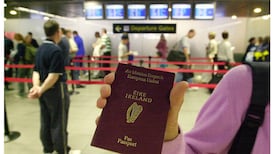Spikes in trolley figures cannot be explained by infrastructure issues with jumps in the numbers happening after weekend periods, Minister for Health Jennifer Carroll MacNeill has said.
She said such spikes are not consistent across all hospitals and there had to be a “consistent application of all of the levers that we have already”.
The Fine Gael TD said such “levers” included the public-only consultant contract as well as the deployment of healthcare staff “not when it’s convenient for people, but when people are sick”.
Ms Carroll MacNeill said this was happening across a number of hospitals already, “with really good outcomes in terms of people not being on trolleys, but it’s not happening consistently”.
READ MORE
Ms Carroll MacNeill was speaking at the unveiling of a new HSE surgical hub in Churchtown, south Dublin, on Thursday. The healthcare facility is designed to reduce patient waiting times and lists and consists of four operating theatres, providing additional capacity to support scheduled care for day cases.
Ms Carroll MacNeill said she was “particularly disappointed” to see HSE trolley figures rise from 253 on Sunday morning of the February bank holiday weekend, to 592 the following Tuesday and back to about 300 in the subsequent days. She said there was a “similar spike” in the figures after last weekend.
“That [spike] can’t be explained by infrastructure and it’s also not consistent across all of the hospitals. Some hospitals don’t have that spike,” she said.
“So I have two challenges; making sure we have the infrastructure to make sure that most people don’t need to be in acute hospitals and making sure that the levers we have for people who are working in the healthcare system, that they are working right across that seven-day period, so that people when they’re sick get treated and people when they’re better, get discharged.”
The Minister also said waiting times had come down since after the Covid-19 pandemic from 13 months to six, and she wanted that to be five months this year.
“Ultimately our target is about three months,” she added. “What we want is more people accessing the healthcare system and more activity in our healthcare system.”
The first scheduled procedure at the new surgical hub is due to take place on Tuesday, February 18th. The HSE said it is among six hubs it plans to have fully operational within two years, with the other sites planned for north Dublin, Galway, Cork, Waterford and Limerick.
When fully operational, each hub is expected to deliver about 4,000 additional day case procedures, 5,800 minor operations, and 18,500 outpatient consultations.
The hubs will cater for a range of specialities, including general surgery, breast and gastrointestinal surgery, gynaecology, ophthalmology, orthopaedics, otolaryngology, pain relief, plastic surgery, urology and vascular surgery, dermatology, hepato-biliary surgery, oral and maxillofacial surgery and planned trauma.
It is intended the hubs will be open 8am-8pm, six days a week. Patients will have their procedure and recovery time and then go home on the same day.













